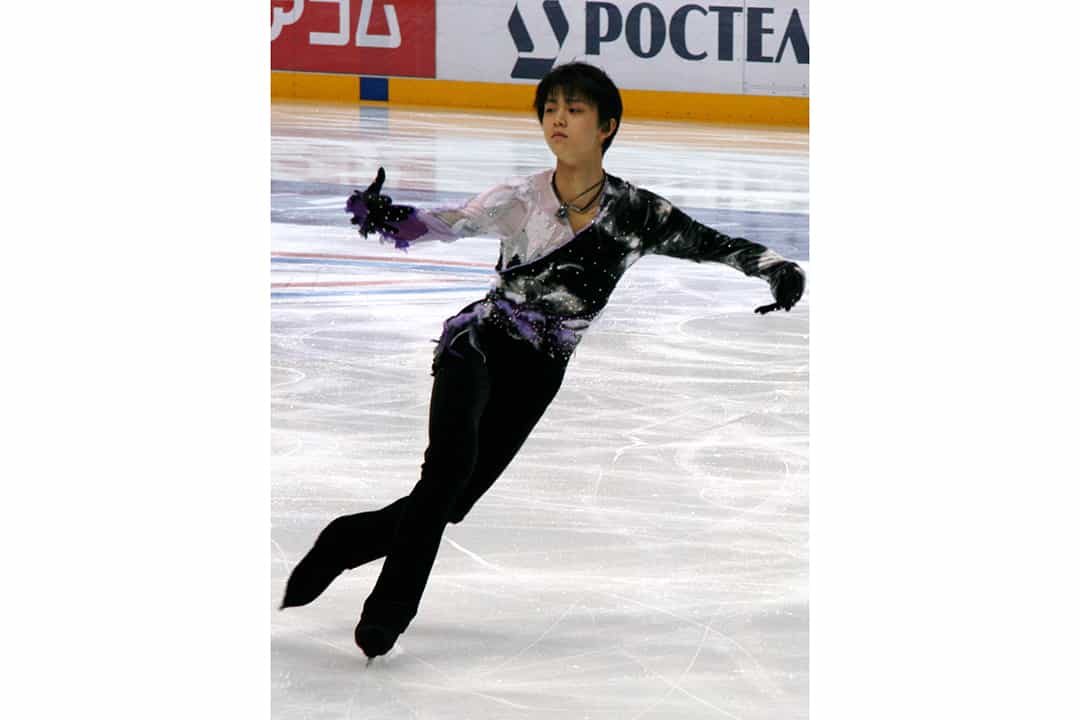I started watching the Winter Olympics after the 2010 Vancouver games, and from then on, I was deeply captivated by the charms and beauty of those icy sports. The games became my one solace on many barren days.
As the Beijing 2022 games came to an end earlier this month, I couldn’t help but feel nostalgic over the iconic moments we’ve seen in the past month. The figure skating events mesmerized me the most, as the skaters’ every jump and spin teleported me to a wonderland of art and happiness.
Among them, one skater especially stood out to me as the supreme standard of both artistry and techniques — the embodiment of figure skating. Not only I, but the figure skating and Olympic communities also owe a debt to Yuzuru Hanyu for the impacts and changes he has made to the sport.
Yuzuru Hanyu, who was born in Sendai, Japan in 1994, is a reigning champion figure skater with dazzling achievements. In 2012, he started training in Toronto with the 1984 and 1988 Canadian silver medallist Brian Orser. Hanyu won back-to-back gold medals in the 2014 Sochi Olympics and 2018 Pyeongchang Olympics, becoming the first man to win two consecutive golds since 1952. He also became the first male singles skater to achieve a Super Slam, since he has won all major international championships at the senior and junior levels.
I recently revisited his past Olympic performances, and every routine is a masterclass in skating. Aside from his flawless technical elements, one of the most fascinating aspects of Hanyu’s performance is his ability to bring out and infect the audience with the emotions of the characters he portrays.
In his debut at Sochi, he inked the whole rink with his vivacious spirit. Wearing a blue shirt, Hanyu immediately transports the audience to a Paris street in his short program skate to “Parisienne Walkways” with his confident, frisky steps. Later, in his free skate, he delicately carried out the emotions in “Romeo and Juliet” with excellent skills and expressions.
If Sochi was the triumph of youth for the 19-year-old, then four years later, Pyeongchang was confirmation that Hanyu is indeed the king of the ice. Hanyu’s Pyeongchang free skate, “Seimei,” vigorously unfolded the story of Seimei’s growth to becoming a powerful man, just like Hanyu himself.
In Beijing, he further explored the philosophy behind his free skate program, “Heaven and Earth,” with connections to his own life. In a turquoise costume with embroidered sakura blossoms and golden birds, he elegantly portrayed the story of an ancient Japanese warlord, Uesugi Kenshin, which had many parallels to Hanyu’s athletic career.
Hanyu, like Uesugi, became a leader at a young age. They both experienced tremendous hardships, yet kept fighting and matured. Hanyu illustrated his own coming-of-age story through his Olympic performance.
It may appear that Hanyu has achieved everything that he deserves, but there have been many instances when his hard work didn’t pay off — sometimes due to International Skating Union’s (ISU) unjust targeting and underscoring. Research and past scoring results demonstrate that, oftentimes, more than half of the judges show statistically significant nationalist biases when scoring.
Furthermore, in Beijing, Hanyu attempted the quadruple axel (4A) jump — which requires 4.5 revolutions — becoming the first person to attempt one at an international event. Hanyu’s 4A in Beijing 2022 was acknowledged, but not certified, because he fell when landing.
No one has ever landed a 4A in competitions. Hanyu’s heroic, history-making challenge pushes figure skating’s standard and technical difficulty forward. It’s possible he could still land the 4A in competition — there is a lot to yet expect from Hanyu.
Since it’s considered the most difficult jump, however, 4A’s score in ISU’s judging book doesn’t reflect its true difficulty. Though it’s arguably significantly more difficult than quadruple lutz (4Lz) jumps, the 4A is worth only one point more than the 4Lz.
Given this, the 4A is a high-risk jump with low rewards that ended up hindering Hanyu from getting the gold. Regardless, Hanyu’s fans will always respect his efforts to dazzle on the ice. The way he pursues even more difficult tricks, even if he risks medals, is the very embodiment of the Olympic spirit.
Furthermore, in protest against the ISU’s underscoring, Hanyu wrote his graduation thesis on how 3D capture technology, that analyzes athletes’ movements, can help figure skating judges grade fairly. His resistance to the ISU’s biases provides hope for fairer games and a brighter future for the competitive sports field — and, personally, his perseverance is a constant reminder for me to keep going.
Fortunately, as Hanyu suggested, the ISU is now working on implementing artificial intelligence and augmented reality technologies in judging figure skating, which will help determine skaters’ pre-rotation and rotation numbers and make scoring more accurate.
What inspires me the most about Hanyu is his devotion. He doesn’t regard figure skating as merely a competitive sport, but as an art. He doesn’t add difficult jumps to his routine just to get high scores. Rather, he strives to achieve overall balance and elegance for the programs, alongside difficult and technical manoeuvres, so he carefully plans tough step sequences and jumps in his choreography by adding graceful jump entrances and exits.
These choices not only increase his programs’ technical difficulties but also blend his choreography into the music, thus adding unity. We need more athletes like him — we watch competitive sports to not only witness awesome skills but also to find inspiration and explore the breadth of humanity.
As he glided over the rink in his sparkling white and pink costume and gracefully kissed the ice in his performance “Come, Spring” at Beijing 2022’s figure skating gala exhibition, Hanyu planted seeds of hope and great expectation for the future of figure skating — and spring has indeed come.


